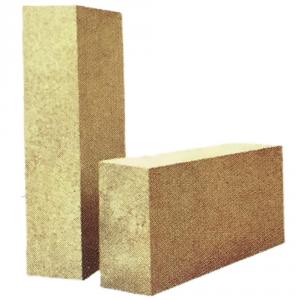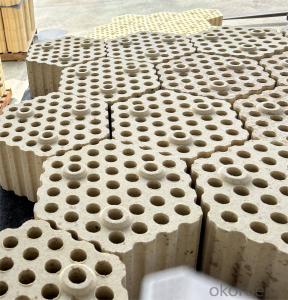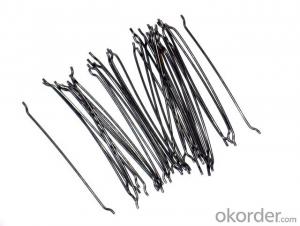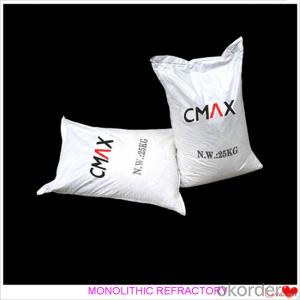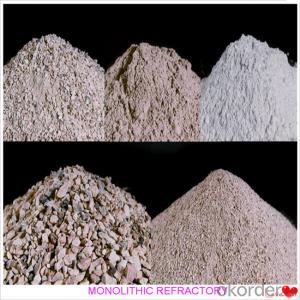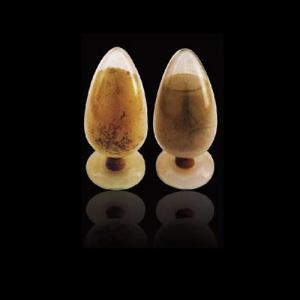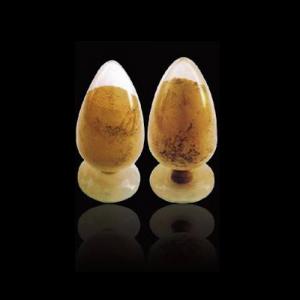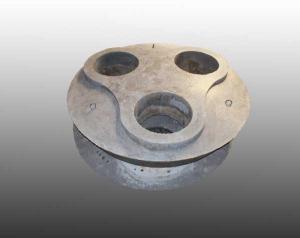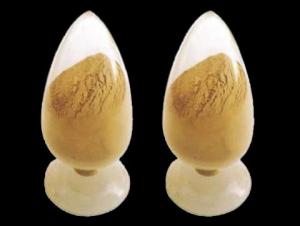Fireclay Brick for Blast Furnace Hot Blast Furnace Monolithic Refractory RN-40 RN-42
- Loading Port:
- China main port
- Payment Terms:
- TT or LC
- Min Order Qty:
- 24 m.t.
- Supply Capability:
- 6000 m.t./month
OKorder Service Pledge
OKorder Financial Service
You Might Also Like
-Fireclay Bricks for Blast Furnace
Fireclay bricks for blast furnaces help to maintain the integrity of blast furnace.
Those fireclay bricks can withstand long-time corrosion of slag and chemical.
Besides, the fire clay refractory brick can reduce the deposition of carbon in the pores, which avoids brick expansion and loose damage during use.
-Fire Clay Bricks for Hot Blast Stoves
Fireclay bricks for hot blast stoves have great resistance to thermal shock, high load-bearing capacity, and minimal creep.
This kind of bricks used in the chamber and walls of hot blast stoves.
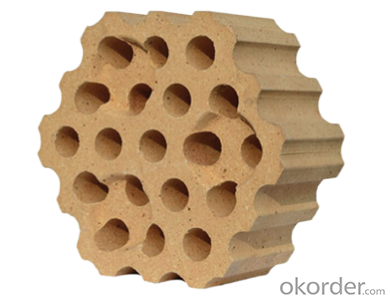
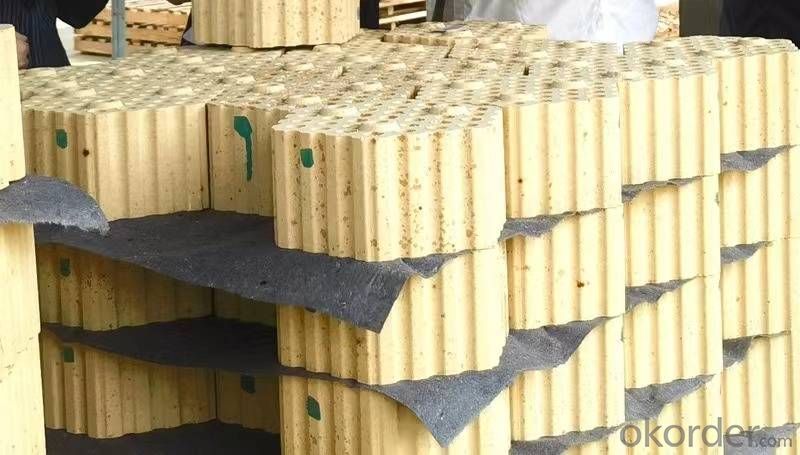
- Q:How do monolithic refractories respond to changes in thermal conditions?
- Monolithic refractories have the ability to withstand and adapt to changes in thermal conditions. They have a high thermal shock resistance, meaning they can handle rapid changes in temperature without cracking or breaking. Additionally, they exhibit good thermal conductivity, allowing them to efficiently conduct and distribute heat. Overall, monolithic refractories demonstrate a stable and reliable response to changes in thermal conditions.
- Q:What are the typical properties of monolithic refractories used in iron and steel industry?
- Monolithic refractories used in the iron and steel industry generally possess several key properties that make them suitable for the harsh operating conditions in these industries. Firstly, monolithic refractories have excellent thermal shock resistance. They can withstand rapid temperature changes without cracking or spalling, which is crucial in the iron and steel industry where the heating and cooling processes can be highly intense. Secondly, these refractories exhibit high refractoriness, meaning they can withstand extremely high temperatures without losing their strength or shape. This is essential in environments where temperatures can reach well above 1000 degrees Celsius. Additionally, monolithic refractories used in the iron and steel industry are known for their excellent corrosion resistance. They can resist the corrosive effects of molten metals, slags, and gases that are commonly encountered in these industrial processes. Furthermore, these refractories have good mechanical strength and abrasion resistance, allowing them to withstand the physical stresses and wear caused by handling and mechanical operations. Another important property of monolithic refractories is their ability to form strong bonds with the existing refractory lining. This ensures a secure and long-lasting installation, reducing the risk of failure and minimizing downtime for maintenance or repairs. Lastly, these refractories often have low porosity, which prevents the infiltration of molten metal or slag into the lining. This helps to maintain the integrity of the refractory structure and prolong its service life. Overall, the typical properties of monolithic refractories used in the iron and steel industry include thermal shock resistance, high refractoriness, corrosion resistance, mechanical strength, strong bonding, and low porosity. These properties collectively contribute to the efficient and reliable operation of iron and steel manufacturing processes.
- Q:What are the specific requirements of monolithic refractories for ladle transfer applications?
- Monolithic refractories used in ladle transfer applications have specific requirements to ensure their effectiveness and durability. These requirements are essential for maintaining the integrity of the ladle lining and preventing any issues during the transfer process. Firstly, monolithic refractories for ladle transfer applications must have excellent thermal shock resistance. Ladles are subjected to extreme temperature changes during the transfer process, and the refractories must be able to withstand rapid heating and cooling without cracking or spalling. This property helps to prevent any damage to the lining and maintains the structural integrity of the ladle. Secondly, ladle transfer applications require monolithic refractories with high resistance to chemical attack. Ladles often come into contact with various molten metals and slag, which can have corrosive properties. The refractories must be able to withstand these corrosive environments and maintain their physical and chemical properties over time. Another important requirement is good mechanical strength. Ladles can experience significant mechanical stress during the transfer process, including impacts and vibrations. Therefore, the monolithic refractories need to have sufficient strength to resist these mechanical forces and prevent any cracking or failure in the lining. Furthermore, ladle transfer applications often involve the use of fluxes and additives, which can have different physical properties. The refractories used must have compatibility with these fluxes and additives to ensure proper performance and avoid any adverse reactions that could affect the ladle's lining. Lastly, monolithic refractories for ladle transfer applications should have low porosity. Low porosity helps to minimize the penetration of molten metal and slag into the refractory lining, reducing the risk of erosion and extending the service life of the refractories. In summary, the specific requirements of monolithic refractories for ladle transfer applications include excellent thermal shock resistance, high resistance to chemical attack, good mechanical strength, compatibility with fluxes and additives, and low porosity. By meeting these requirements, the refractories can effectively withstand the harsh conditions of ladle transfer and ensure the longevity and performance of the ladle lining.
- Q:What are the main factors affecting the thermal expansion of monolithic refractories?
- The main factors affecting the thermal expansion of monolithic refractories include the type of refractory material, the temperature range, the chemical composition, and the physical structure of the refractory. Firstly, the type of refractory material plays a significant role in its thermal expansion behavior. Different types of refractories, such as alumina-based, silica-based, and magnesia-based refractories, have varying coefficients of thermal expansion (CTE). For example, alumina-based refractories generally have a lower CTE compared to silica-based refractories. Therefore, the choice of refractory material can greatly influence its thermal expansion characteristics. Secondly, the temperature range at which the refractory is exposed affects its thermal expansion. As the temperature increases, the refractory material expands due to the thermal energy absorbed. However, different refractories have different temperature-dependent expansion behaviors. Some refractories may have a linear or near-linear expansion with temperature, while others may exhibit non-linear or step-wise expansion. The temperature range of operation is an important consideration in determining the suitability of a refractory for a particular application. The chemical composition of the refractory also affects its thermal expansion. The presence of different chemical elements and compounds in the refractory material can influence its expansion behavior. For example, the addition of certain oxides, such as magnesia or zirconia, can alter the CTE of the refractory. Similarly, impurities or variations in the chemical composition can introduce differences in expansion characteristics among refractories of the same type. Lastly, the physical structure of the refractory, including its porosity, density, and microstructure, can affect thermal expansion. The presence of open or closed pores within the refractory can affect its ability to expand uniformly under thermal stress. The density of the refractory also plays a role, as denser refractories tend to have lower thermal expansion. Additionally, the microstructure, including grain size and orientation, can influence the overall expansion behavior of the refractory. In conclusion, the main factors affecting the thermal expansion of monolithic refractories include the type of refractory material, temperature range, chemical composition, and physical structure. Understanding these factors is essential in selecting the appropriate refractory for a specific application to ensure optimal performance and durability.
- Q:How are monolithic refractories used in the repair and maintenance of ladle and tundish linings?
- Monolithic refractories are used in the repair and maintenance of ladle and tundish linings by providing a durable and heat-resistant material that can withstand the harsh conditions of molten metal handling. These refractories are applied as a single, continuous lining, eliminating the need for individual bricks or tiles, which simplifies the repair and maintenance process. They can be easily shaped and installed in the desired areas, allowing for efficient repair of damaged sections. Monolithic refractories also offer excellent resistance to thermal shock, erosion, and corrosion, ensuring the longevity and reliability of ladle and tundish linings.
- Q:How do monolithic refractories contribute to the overall safety of iron and steel operations?
- Monolithic refractories play a crucial role in ensuring the overall safety of iron and steel operations by providing several important benefits. Firstly, monolithic refractories are known for their high thermal insulation properties, which means they can effectively withstand extreme temperatures and prevent heat loss. This is particularly important in iron and steel operations, where high temperatures are involved in various processes such as melting, casting, and heat treatment. By minimizing heat loss, monolithic refractories help in maintaining a stable temperature environment, reducing the risk of accidents and ensuring the safety of personnel. Secondly, monolithic refractories offer excellent resistance to chemical attacks. In iron and steel operations, various chemicals and gases are present that can corrode and deteriorate the lining of furnaces, ladles, and other equipment. By providing a protective barrier, monolithic refractories prevent the penetration of these corrosive substances, thus extending the lifespan of the equipment and reducing the likelihood of failures or leaks that could pose safety hazards. Additionally, monolithic refractories are known for their structural integrity and high mechanical strength. In iron and steel operations, heavy loads and stresses are common, especially during the handling and movement of molten metal and raw materials. Monolithic refractories can withstand these stresses without cracking or collapsing, ensuring the structural stability of the equipment and minimizing the risk of accidents or equipment failure. Furthermore, monolithic refractories offer excellent thermal shock resistance. During iron and steel operations, sudden temperature changes can occur due to the introduction of cold materials or liquids into hot equipment. This thermal shock can cause cracking and spalling of the refractory lining, which can compromise the safety and efficiency of the operation. Monolithic refractories, with their ability to withstand thermal shock, help in minimizing the risk of unexpected failures and maintaining the overall safety of the operation. In conclusion, monolithic refractories contribute significantly to the overall safety of iron and steel operations by providing high thermal insulation, chemical resistance, structural integrity, and thermal shock resistance. By ensuring a stable temperature environment, protecting against chemical attacks, withstanding heavy loads, and resisting thermal shock, monolithic refractories help in preventing accidents, equipment failures, and potential hazards, thus creating a safer working environment for personnel in the iron and steel industry.
- Q:What are the advancements in monolithic refractory technology for the iron and steel industry?
- There have been significant advancements in monolithic refractory technology for the iron and steel industry in recent years. Monolithic refractories are a type of heat-resistant material used to line the walls and floors of high-temperature industrial processes, such as those involved in iron and steel production. One of the key advancements in monolithic refractory technology is the development of new and improved materials. Traditional refractory materials, such as firebricks, have been replaced by more advanced materials like castables and gunning mixes. These new materials offer superior performance in terms of thermal conductivity, thermal shock resistance, and erosion resistance. They can withstand higher temperatures and can be applied more efficiently, resulting in improved process efficiency and reduced downtime for maintenance. Another important advancement is the use of advanced additives in monolithic refractories. These additives can enhance the properties of the refractory material, such as increasing its resistance to corrosion and erosion. They can also improve the bond between the refractory and the substrate, ensuring a longer lifespan for the lining. Furthermore, advancements in monolithic refractory technology have led to the development of innovative installation techniques. For instance, shotcreting, a process that involves spraying the refractory material onto the surface, has gained popularity due to its efficiency and ability to provide a uniform lining. Similarly, the use of gunning machines, which pump the refractory material at high velocity, has improved the speed and accuracy of installation. Moreover, there have been advancements in the design of monolithic refractories specifically tailored for different applications in the iron and steel industry. Refractories for blast furnaces, ladles, tundishes, and other critical equipment have been optimized to withstand the unique challenges and harsh conditions of these processes. The development of specialized monolithic refractories has resulted in increased productivity, reduced energy consumption, and improved product quality in the iron and steel industry. In conclusion, advancements in monolithic refractory technology for the iron and steel industry have brought about improved materials, advanced additives, innovative installation techniques, and specialized designs. These advancements have significantly enhanced the performance, durability, and efficiency of refractory linings in high-temperature industrial processes. As a result, the iron and steel industry can benefit from increased productivity, reduced downtime, and improved product quality.
- Q:How do monolithic refractories withstand the alkali attacks in cement kiln applications?
- Monolithic refractories withstand alkali attacks in cement kiln applications due to their unique composition and properties. These refractories are made of high-quality materials such as silica, alumina, and magnesia, which have excellent resistance to alkali reactions. Additionally, they are designed to have dense and compact structures, limiting the penetration of alkali compounds into the refractory material. The dense structure also helps in reducing the permeability of the refractory, preventing alkali infiltration. Moreover, monolithic refractories often have a high melting point, which further enhances their resistance against alkali attacks. Overall, the combination of material composition, compact structure, and high melting point enables monolithic refractories to withstand the harsh alkali environment of cement kilns.
- Q:How do monolithic refractories enhance the performance of ladle and tundish preheating systems?
- There are several ways in which monolithic refractories play a crucial role in improving the performance of ladle and tundish preheating systems. To begin with, monolithic refractories possess outstanding thermal insulation properties, which aid in retaining heat within the ladle and tundish preheating systems. This insulation ability reduces heat loss and ensures that the preheating systems operate at optimal temperatures. By maintaining a consistent and high heat level, monolithic refractories enable efficient preheating of ladles and tundishes, thereby reducing the time required for the preheating process. Furthermore, monolithic refractories exhibit high refractoriness, enabling them to withstand extreme temperatures without significant degradation. This is especially important for ladle and tundish preheating systems that endure intense heat during operation. The capacity of monolithic refractories to withstand high temperatures ensures their longevity and prevents premature failure, resulting in enhanced performance and reliability of the preheating systems. Moreover, monolithic refractories possess exceptional resistance to thermal shock. The preheating process often subjects ladles and tundishes to rapid temperature changes, which can cause thermal stress and lead to cracking and spalling of the refractory lining. However, monolithic refractories, with their superior resistance to thermal shock, can endure these rapid temperature fluctuations without sustaining significant damage. This resistance guarantees the integrity of the refractory lining, extending the lifespan of the ladle and tundish preheating systems and improving their overall performance. Additionally, monolithic refractories offer good mechanical strength and abrasion resistance. Ladles and tundishes frequently experience mechanical forces, such as stirring and pouring of molten metal. The presence of monolithic refractories with high mechanical strength and abrasion resistance ensures the integrity of the refractory lining even under harsh conditions. This durability allows for prolonged and efficient operation of the preheating systems, contributing to their enhanced performance. In conclusion, monolithic refractories enhance the performance of ladle and tundish preheating systems through their excellent thermal insulation, high refractoriness, resistance to thermal shock, and good mechanical strength and abrasion resistance. These properties enable efficient and reliable preheating, minimize heat loss, prevent premature failure, and prolong the lifespan of the preheating systems, ultimately improving their overall performance.
- Q:What are the key trends in the use of monolithic refractories in the iron and steel industry?
- There are several key trends in the use of monolithic refractories in the iron and steel industry that are worth noting. Firstly, there is a growing demand for monolithic refractories due to their superior performance characteristics compared to traditional brick refractories. Monolithic refractories offer higher thermal shock resistance, better insulation properties, and improved resistance to chemical attacks. This has led to their increased usage in various applications within the iron and steel industry. Secondly, there is a shift towards the use of low-cement and ultra-low cement castables in monolithic refractories. These materials have a reduced cement content, resulting in improved refractory properties such as higher strength, better corrosion resistance, and increased resistance to thermal spalling. This trend is driven by the need to enhance the overall efficiency and durability of refractory linings in iron and steel manufacturing processes. Another important trend is the development of advanced monolithic refractories with enhanced sustainability and environmental performance. The iron and steel industry is under increasing pressure to reduce its carbon footprint and minimize environmental impact. As a result, there is a growing emphasis on the use of environmentally friendly binders and additives in monolithic refractories. These new materials not only offer excellent refractory properties but also contribute to the industry's sustainability goals. Furthermore, there is a rising focus on the development of monolithic refractories that can withstand extreme operating conditions. Iron and steel manufacturing processes involve high temperatures, aggressive chemical environments, and severe mechanical stresses. Therefore, there is a need for monolithic refractories that can endure these harsh conditions without compromising their performance. The industry is investing in research and development to create refractories that provide exceptional resistance to thermal shock, abrasion, and erosion. Lastly, there is an increasing adoption of digital and smart technologies in the monitoring and maintenance of monolithic refractories. With the advancements in sensor technology and data analytics, it is now possible to collect real-time data on the condition and performance of refractory linings. This allows for proactive maintenance, early detection of potential issues, and optimization of refractory usage, resulting in improved operational efficiency and cost savings. In conclusion, the key trends in the use of monolithic refractories in the iron and steel industry include the demand for superior performance, the shift towards low-cement and ultra-low cement castables, the development of sustainable materials, the focus on extreme operating conditions, and the adoption of digital and smart technologies for monitoring and maintenance. These trends reflect the industry's continuous efforts to enhance the efficiency, durability, and environmental sustainability of refractory linings in iron and steel manufacturing processes.
1. Manufacturer Overview |
|
|---|---|
| Location | |
| Year Established | |
| Annual Output Value | |
| Main Markets | |
| Company Certifications | |
2. Manufacturer Certificates |
|
|---|---|
| a) Certification Name | |
| Range | |
| Reference | |
| Validity Period | |
3. Manufacturer Capability |
|
|---|---|
| a)Trade Capacity | |
| Nearest Port | |
| Export Percentage | |
| No.of Employees in Trade Department | |
| Language Spoken: | |
| b)Factory Information | |
| Factory Size: | |
| No. of Production Lines | |
| Contract Manufacturing | |
| Product Price Range | |
Send your message to us
Fireclay Brick for Blast Furnace Hot Blast Furnace Monolithic Refractory RN-40 RN-42
- Loading Port:
- China main port
- Payment Terms:
- TT or LC
- Min Order Qty:
- 24 m.t.
- Supply Capability:
- 6000 m.t./month
OKorder Service Pledge
OKorder Financial Service
Similar products
New products
Hot products
Hot Searches
Related keywords
